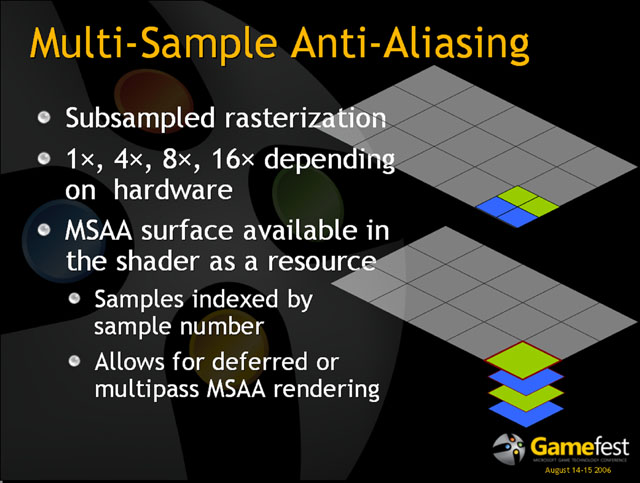Lots of great content. It's unfortunate so few people care/are paying any attention.
*Seems that the PIX performance tools continue to grow, and are becoming much more useful as time goes on. It's also interesting that MS didn't really get great documentation on the performance counters in the GPU and instead have had to play around with them to find out which ones are reliable, what they do, and so on. Rather than have a situation where MS went "Hey, build us some performance counters into these chips...." it was more like "you guys use these counters when you're engineering these chips, so leave them in and we'll make use of them too. And add a couple extra ones in too, please." Also, even though there are many PerfCounters, they can't all be used at once. Then-recent updates allow the tool to run through multiple times to get all the data available.
*Skinning: Wow. It's impressive how much of a win Memexport is (and stream-out on D3D10 should be). Skinning the characters once and then outputting the results to memory is significantly faster than the other methods tested once several attributes are being used. Much better than vertex fetch through either the texture cache or vertex cache, as well as the constant-buffers added to the system.
*Lots of updates on the compiler and API side of things. Several things added to help better manage output code, and tweak code to prevent z-fighting issues from occurring when you're doing something like z-prepassing and you don't necessarily want to run the same complicated vertex shaders in all your passes. Updates to other areas like predicated tiling.
Oh, and not many ******s on the 360 side of the fence should go about calling Heavenly Sword's HDR a hack anymore (though there really aren't any here....). In any case, Bungie apparently wasn't willing to give up blending support (light accumulation), and so passed on FP16 in favor of rendering to a LDR fp-10 (7e3) buffer and then also outputting another rendertarget in an 8-bit gamma 2.0 format for bloom, then combining the two after and through some postprocessing (including an unrealistic part) to achieve the final result. They use an 8-bit format RGB + multiplier for HDR cubemaps, though, so they don't need blending there/at that stage apparently.
Edit: Well, I suppose I have had quite a bit of free time today

